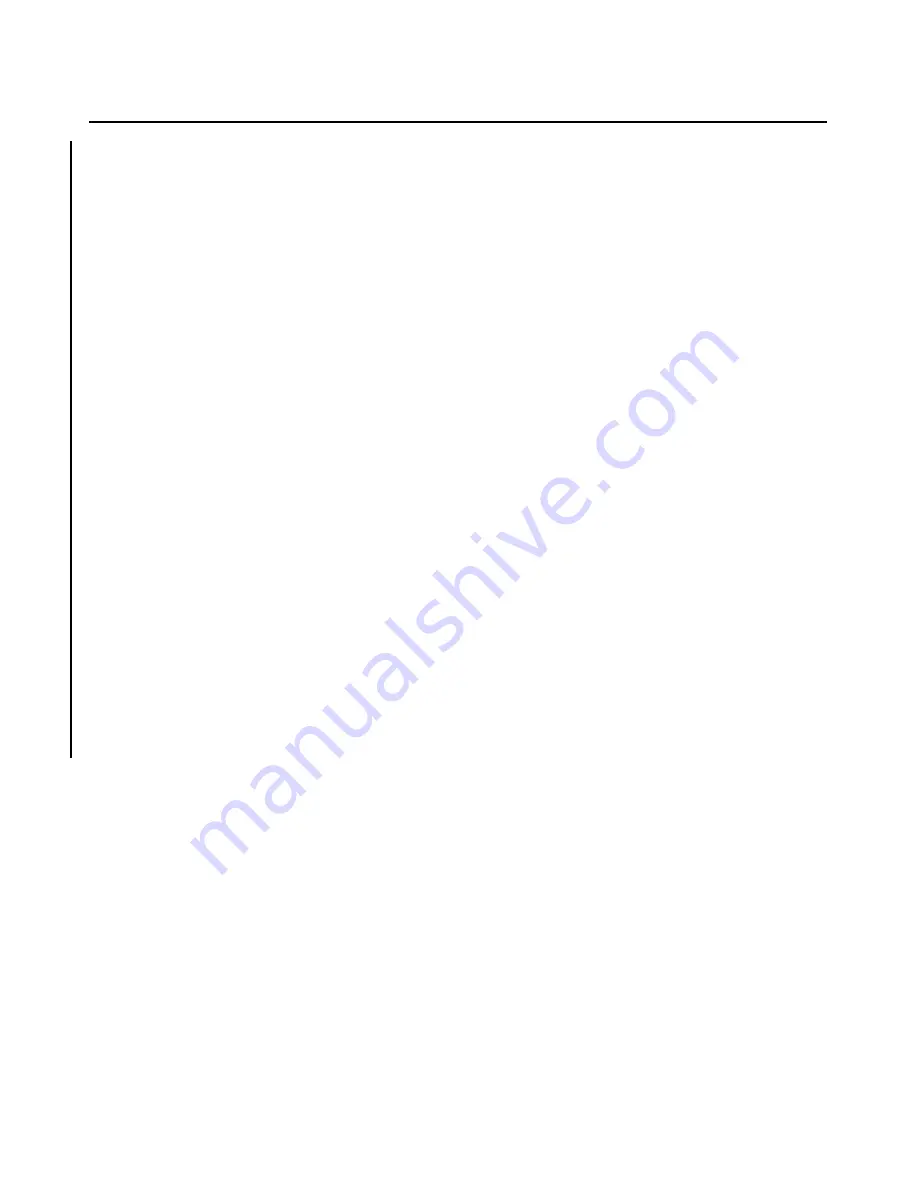
MINOR SCRATCH AND CRACK REPAIR
1 .
Remove wax, oil, and dirt from around damaged area with acetone, methylethylketone, or equivalent and
remove paint to gel coat.
2 . Scrape damaged area with a fine blade knife or a power drill with burr attachment to roughen bottom
and sides of damaged area. Feather edge surrounding scratch or cavity. Do not undercut edge. (If
scratch or cavity is shallow and penetrates only the surface coat, continue to step 2, b.)
3. Pour a small amount of resin into a jar lid or on a piece of cardboard, enough to fill damaged area.
Mix equal amount milled fiberglass with resin, (use a putty knife or stick. Add catalyst per kit instruction,
to resin and mix thoroughly. Use a hypodermic needle to inject gel into small cavities not requiring
fiberglass millings mixed with gel.
4. Work mixture of resin, fibers, and catalyst into damaged area. Use sharp point of putty knife or s t i c k
to press it into bottom of hole and puncture any air bubbles. Fill scratch or hole above surrounding
undamaged area about 0.062 (1/16) of an inch.
5. Lay a piece of cellophane or waxed paper over repair to block air and start cure of gel mixture.
6. Allow gel to cure 10 to 15 minutes until it is rubbery to touch. Remove cellophane and trim flush with
surface, using a sharp razor blade or knife. Replace cellophane and cure completely for 30 minutes to
an hour. Patch will shrink below structure surface as it cures. (If wax paper is used, check wax is
removed from surface.)
HOLE REPAIR
1. Rough up hole bottom and edges with electric burr attachment or rough sandpaper. Feather hole into
surrounding gel coat, do not undercut.
2. Pour out a small amount of resin, add catalyst, and mix thoroughly (use a cutting motion rather than
stirring). Use no fibers.
3. Using tip of a putty knife or fingertips, fill hole to about one-sixteenth of an inch above surrounding
surface with gel coat mixture.
4. Lay cellophane over patch to start curing process. Repeat step f, trimming patch when partially cured.
5 . After trimming patch, immediately place small amount of gel coat on cut edge of patch and cover with
cellophane. Use a squeegee or the back of a razor blade, squeegee level with area surrounding patch.
Leave cellophane on patch for 1 or 2 hours or overnight for complete cure.
6. After repair has cured 24 hours, sand patched area using a sanding block with fine wet sandpaper.
Finish by priming, sand again, and apply color coat.
FIBERGLASS FRACTURE AND PATCH REPAIRS
1. Remove wax, oil, and dirt from damaged area with acetone, methylethylketone, or equivalent.
2. Use a key hole saw, electric saber saw, or sharp knife to cut away ragged areas. Cut back to sound
material.
3. Remove paint three inches back from damaged area.
4. Use 80-grit dry paper and working inside the structure, bevel edges to approximately a 30 degree angle
and rough-sand hole and area around it. Feather back for about two inches all around hole to roughen
surface for strong bond with patch.
5. Cover a piece of cardboard or metal with cellophane. Tape it to outside of structure. Completely
cover hole. Cellophane must face toward inside of structure. Repair to a sharp contour or shaped a r e a
requires a sheet of aluminum formed to a similar contour to be placed over area. The aluminum
must be covered with cellophane.
6. Prepare a patch of fiberglass mat and cloth to cover area two inches larger than hole.
7. Mix small amount of resin and catalyst, (enough for one step) per kit instructions.
PIPER AIRCRAFT
PA - 4 4 - 1 8 0 / 1 8 0 T
AIRPLANE MAINTENANCE MANUAL
51-12-03
Page 51-06
Revised: June 20, 1995
2L14
Summary of Contents for SEMINOLE PA-44-180
Page 38: ...CHAPTER DIMENSIONS AND AREAS 1B14...
Page 49: ...CHAPTER LIFTING AND SHORING 1C1...
Page 53: ...CHAPTER LEVELING AND WEIGHING 1C5...
Page 58: ...CHAPTER TOWING AND TAXIING 1C10...
Page 62: ...CHAPTER PARKING AND MOORING 1C14...
Page 65: ...CHAPTER REQUIRED PLACARDS 1C17...
Page 70: ...CHAPTER SERVICING 1C22...
Page 98: ...CHAPTER STANDARD PRACTICES AIRFRAME 1E2...
Page 108: ...CHAPTER ENVIRONMENTAL SYSTEM 1E12...
Page 189: ...CHAPTER AUTOFLIGHT 1H21...
Page 192: ...CHAPTER COMMUNICATIONS 1H24...
Page 202: ...CHAPTER ELECTRICAL POWER 1I10...
Page 228: ...CHAPTER EQUIPMENT FURNISHINGS 1J12...
Page 233: ...CHAPTER FIRE PROTECTION 1J17...
Page 238: ...CHAPTER FLIGHT CONTROLS 1J24...
Page 304: ...2A18 CHAPTER FUEL...
Page 325: ...2B17 CHAPTER HYDRAULIC POWER...
Page 357: ...2D1 CHAPTER ICE AND RAIN PROTECTION...
Page 414: ...CHAPTER LANDING GEAR 2F13...
Page 479: ...2I6 CHAPTER LIGHTS...
Page 488: ...2I16 CHAPTER NAVIGATION AND PITOT STATIC...
Page 503: ...2J7 CHAPTER OXYGEN...
Page 524: ...2K6 CHAPTER VACUUM...
Page 535: ...2K19 CHAPTER ELECTRICAL ELECTRONIC PANELS AND MULTIPURPOSE PARTS...
Page 546: ...INTENTIONALLY LEFT BLANK PA 44 180 180T AIRPLANE MAINTENANCE MANUAL 2L6 PIPER AIRCRAFT...
Page 547: ...2L7 CHAPTER STRUCTURES...
Page 582: ...CHAPTER DOORS 3A18...
Page 593: ...CHAPTER STABILIZERS 3B8...
Page 604: ...CHAPTER WINDOWS 3B22...
Page 611: ...CHAPTER WINGS 3C10...
Page 624: ...CHAPTER PROPELLER 3D1...
Page 643: ...CHAPTER POWER PLANT 3D21...
Page 667: ...CHAPTER ENGINE FUEL SYSTEM 3F1...
Page 681: ...CHAPTER IGNITION 3F16...
Page 712: ...CHAPTER ENGINE INDICATING 3H1...
Page 730: ...CHAPTER EXHAUST 3H19...
Page 734: ...CHAPTER OIL 3I1...
Page 743: ...CHAPTER STARTING 3I11...
Page 755: ...CHAPTER TURBINES 3J1...















































